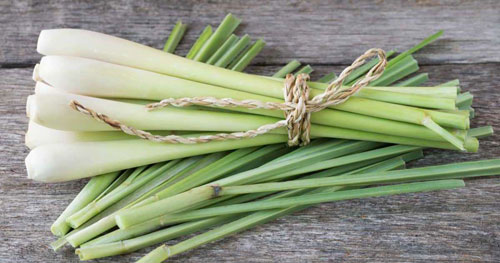The medicinal properties of lemongrass and why you should grow it this summer
Lemongrass is a wonderful plant to complement the summer garden! It has many medicinal and aromatic properties and can be used in a variety of ways. It is often considered a must for home medicinal herb gardens, and it’s easy to see why that is!

Lemongrass is a wonderful essential oil to diffuse. The aromatic properties of lemongrass are said to help those with anxiety. This plant smells a little like lemon, but it also smells “green.” It has a scent almost like fresh plants outside after it rains mixed with a slight lemony citrus aroma. It’s truly amazing.
Lemongrass Is Beneficial as Natural Remedy
Also often known as citronella, lemongrass provides some natural medicinal properties as well. Both the leaves and the oil are useful in herbal treatments. Here are some of the uses of lemongrass:
• Digestive Tract Spasms – stomachache, high blood pressure, convulsions, pain, vomiting, cough, achy joints (rheumatism), fever, the common cold, and exhaustion.
• Anti-Microbial – It is also used to kill germs and as a mild astringent. With hand sanitizer sold out everywhere, why not give a plant the job of killing some of those germs that can make us sick?
• Food & Beverages – not only does lemongrass add flavor to food and makes a great tea, but it is used to make natural citral and vitamin A.
• Topical Remedies – Lemongrass can also be used in a variety of ways. If can be inhaled (aromatherapy) or it can be applied directly on the skin. It can also help with headaches and anxiety. It can also help with muscle pain when made into a salve.
• Aromatherapy– If you are a little sore after an intense workout, diffuse some lemongrass! It has been shown to help with muscle pain and soreness. Plus, it’s not a heavy overbearing scent and perfect for hot summer days! Try making this disinfecting spray for the home using essential oils like lemongrass.
Planting Lemongrass
Lemongrass is a great summer choice for the garden as it loves hot conditions. So you will want to plant it in the spring after the last chance of frost has passed. Plant it in full sun. You should also make sure you have well-drained soil with a pH of 6.5 to 7.0. Space your lemongrass plants 24 inches apart. Kick off the growing season by mixing several inches aged compost or other rich organic matter into your native soil.
Lemongrass will also require consistent watering. Give the plant more moisture and water when the top inch of soil becomes dry. You can also get the most out of your growing efforts by regularly feeding with water-soluble plant food. Harvest lemongrass stalks once plants reach 12 inches tall and are a half-inch wide at the base.
Lemongrass can be planted in a 5-gallon bucket or pot of similar size. It can also be “winterized” so you can have the herb all-year-round!
Bonnie Plants had some excellent suggestions on how to keep lemongrass over the winter. In colder regions, “overwinter” your lemongrass indoors by digging up a few stalks, trimming them down to just a few inches tall, and planting them in smaller pots. Place them in a bright, south-facing window. Keep the soil barely moist, as plants grow very slowly over winter. Another option is to store a pot of lemongrass, cut down, in a cool, dark place like a basement. Water just a few times over winter to keep roots alive. In spring, bring the pot into a bright spot, and resume normal watering. Shift outdoors when temperatures are above 40°F.
Please keep in mind, that lemongrass is tropical in nature and will usually only survive winters outside in agricultural zones 8 and warmer.
Not many pests will bother your lemongrass either. An added bonus is it’s a natural bug repellant (citronella) and is often used in store-bought and homemade insect repellants. If you plan on being outside for extended periods of time and want to repel mosquitos, try making this natural bug balm.
As lemongrass grows, it often forms a tight clump that’s difficult to dig into, especially if you have it in a pot. Keep an eye on plants in pots. With sufficient water, roots can quickly fill a too-small pot and burst it. You can use a sharp spade or a hatchet to remove roots in early spring. Slice it like a pie, then pry slices of roots free.
The edible portion of lemongrass is near the bottom of the stalk. Carefully cut off the grassy top part of the plant; use caution, as this can be razor-sharp at times. Leaves can be bundled and added to the liquid in a teapot or stockpot, then simmered to infuse lemon flavor into the brew.
Lemongrass offers wonderful aromatherapy benefits, some natural medicinal benefits, and can even be a natural bug repellant! It will also flavor soups and teas. Why not grow some lemongrass this summer?
yogaesoteric
June 22, 2020
